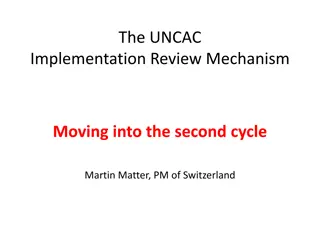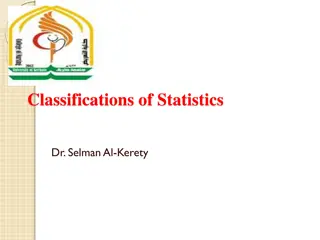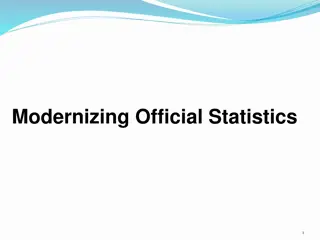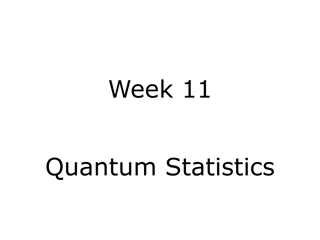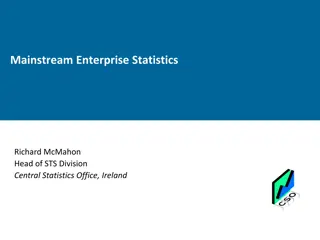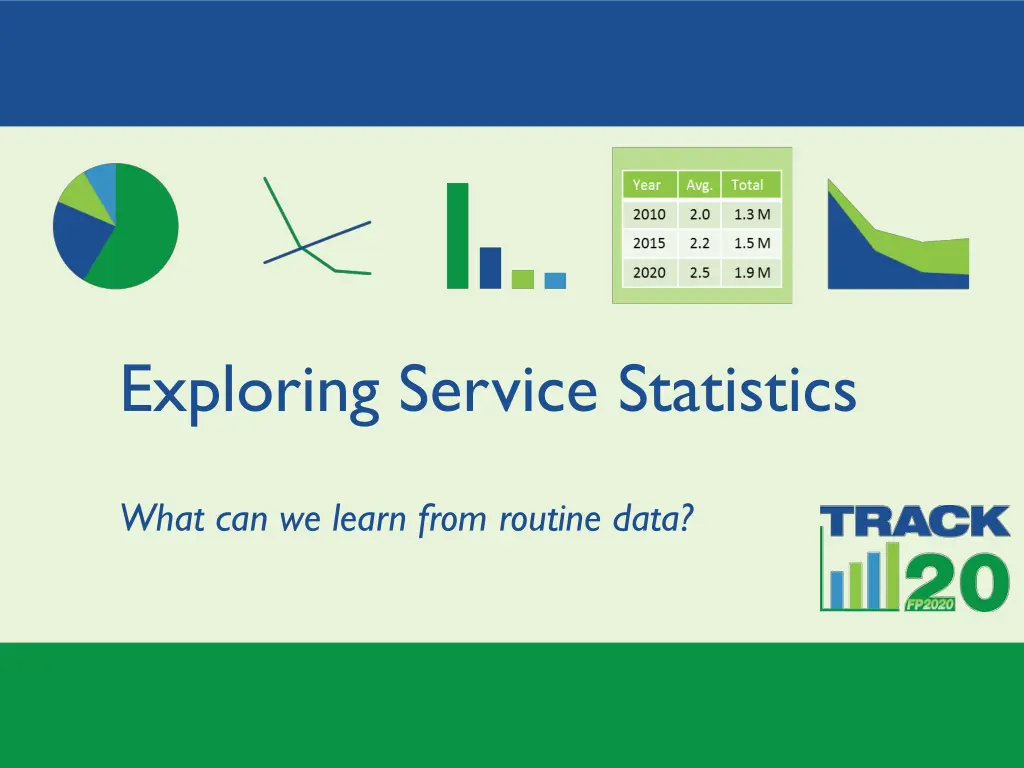
Understanding Family Planning Service Statistics
Dive into the world of service statistics in family planning programs, exploring the advantages, disadvantages, data sources, and the types of data captured. Discover how routine data can offer valuable insights for monitoring and improving family planning services globally.
Download Presentation

Please find below an Image/Link to download the presentation.
The content on the website is provided AS IS for your information and personal use only. It may not be sold, licensed, or shared on other websites without obtaining consent from the author. If you encounter any issues during the download, it is possible that the publisher has removed the file from their server.
You are allowed to download the files provided on this website for personal or commercial use, subject to the condition that they are used lawfully. All files are the property of their respective owners.
The content on the website is provided AS IS for your information and personal use only. It may not be sold, licensed, or shared on other websites without obtaining consent from the author.
E N D
Presentation Transcript
Exploring Service Statistics What can we learn from routine data?
Track20s Work on Expanding use of Service Statistics The Track20 project was designed to make use of existing data sources to support annual monitoring of FP including service statistics data collected by countries. Monitoring of FP programs at a global level has largely been driven by surveys, but there is a wealth of data available within countries. Annual, Quarterly, Monthly Data Cost-Effective (already collected) Available at regional / facility level Advances in technology = greater accessibility and quality Track20 has a mandate to find more and better ways to use family planning service statistics 2
What do we mean when we say Service Statistics ? Service Statistics are routine data collected in conjunction with family planning service delivery General Characteristics - Summarizes the volume of services provided - Ex. # of IUDs inserted, # of clients seen, # of condoms distributed Captured at service delivery point and aggregable to regional and national values Used by governments and NGOs (and sometimes private providers) to monitor programs and track progress in providing FP - -
SS Advantages & Disadvantages Advantages Most countries already collect service statistics (and they are cheaper than implementing more surveys) Can include high levels of detail for looking at regional variation Improves as it they are more widely used and as systems improve Are the only source of data on progress between surveys Disadvantages Quality can be poor Can be used inappropriately Can be hard to compare across countries
Where do we get SS Data? Facility Register(s) Facility Reporting Forms HMIS Capturing detailed data on individual clients and services used by provider and containing information necessary for provision of health care services Aggregates data from reporting forms and may include calculated indicators based on data elements from reporting forms. Capturing anonymized, aggregated data from the register reported from facility up to local/ regional/ national level LMIS Commodity logistics data from facilities, regional hubs, central warehouses capturing data on commodity distribution/stock levels
What data is captured in Service Statistics? Any data we want to track generally comes from here Generally these are the data we see HMIS Register Facility Reporting Form Data Elements - Total # of commodities / client visits/ users - By method - Sometimes by age - Sometimes by status (new vs returning) - LARC Removals - Priority Populations - FP provided to PP women, HIV positive, Youth Client/Service Details - Date of service - Client Name & ID # - Client Details - Age, - Parity - Residence - Other Characteristics - Counseling Provided - FP Service(s) Provided - Other services - HIV testing - Cancer Screening - GBV screening ` - Indicators FP Coverage New FP Users Continuing FP Users % Switching Priority Pop/Intervention - PPFP - HIV/FP Integration - FP via Outreach Reporting Rates - - - - - -
What FP data element is captured? Commodities OR Visits OR Users Depending on how data is collected @ facility & reported up through reporting form data element capturing FP provision may be one of these three # of FP Commodities distributed to clients (# of IUDs inserted, # of Pill packages given) Commodities # of client visits at which FP service was provided (IUD Insertion, Pill Visit) Visits # of women currently using a modern method provided at the facility (takes into account provision, continuation of LARCs, discontinuation, and loss to follow-up) Users
Data Elements vs FP Indicators Detailed Raw Data from FP Report Calculated Data from HMIS and may include other data (population) % of FP Clients who are Youth (<20) FP Clients by Age (10-14, 15-19, 20-24, 25+) FP Coverage (% of women using FP) Total FP Visits by Method Note Indicators can only be as detailed as data elements allow
Challenges with FP Coverage Indicators Many countries use FP data elements to calculate coverage indicators which are not comparable across countries: Lao PDR - % of WRA using FP Ethiopia - Contraceptive Acceptance Rate Kenya - WRA receiving FP Commodities Primary global indicator for FP is mCPR from surveys CANNOT be calculated from service statistics - - Methodological differences between survey and service statistics mCPR has to come from probabilistic sample - Women of reproductive age (WRA) vs. sample based on interaction with public sector provider
Developing a Global FP Coverage Indicator Couple Years of Protection (CYPs) Only globally accepted service statistics-based indicator Estimated Modern Use (EMU) is a new global service statistics-based coverage indicator developed by Track20 . The EMU calculation utilizes CYPs as a basis for estimating a population-based proportional indicator (a percentage versus a whole number), designed to be more comparable to mCPR, with a few adjustments. The SS to EMU tool transforms several types of generally available service statistics data (family planning commodities distributed, family planning visits, or family planning users) into a single, comparable metric and calculates annual growth rate and method mix.
Using FP Service Statistics Data How are countries using this data? Monitoring Progress Tracking Priority Interventions Understanding Regional Variation What additional opportunities exist within this data? Maximizing data elements to create new indicators Quality Checking understanding outliers Answering BIG questions with service stats
Monitoring Progress Afghanistan has developed RMNCH Profiles that use service statistics to track progress on health programs, including FP, at the provincial level.
Tracking Priority Interventions India recently introduced injectables and is monitoring trends in provision and continuation using service statistics.
Understanding Regional Variation Indonesia used SS to explore geographic dimensions of Extreme Method Mix (top two methods 80%)
Maximizing data elements to create new indicators As part of the FP Goals process, Niger explored the availability of FP methods at health centers using service provision data - % of facilities that had provided at least one person with each method in the last year 100% 80% 60% 40% 20% 0% Agadez Diffa Dosso Maradi Niamey Tahoua Tillaberi Zinder % des CSI qui offrent la pilule % des CSI qui offrent des DIU % des CSI qui offrent des injections % des CSI qui offrent des implants
Quality Checking Understanding Outliers Comparing mCPR to EMU from commodities and visits 250% Exploring this spike in use, it was found that one facility reported distributing 4 million IUDs 200% 150% 100% 50% 0% 2010 EMU (commodities) 2011 2012 EMU (visits) 2013 2014 2015 mCPR (AW) from surveys
Answering BIG questions with service stats Exploring the impact of Ebola on FP provision in Liberia 45000 4500 Monthly cases of Ebola 40000 4000 35000 3500 Monthly distribution of Depo to clients Contraception Provided 30000 3000 Monthly Cases of Ebola 25000 2500 20000 2000 15000 1500 10000 1000 5000 500 0 0 3/13 6/13 9/13 12/13 3/14 6/14 9/14 12/14 3/15 6/15 9/15 12/15 3/16 6/16 9/16 12/16 3/17 6/17 Depo Provera Ebola
But what about Reporting Rates? All the analysis and data use discussed assumes that the service statistics data is nationally representative. But we know that not all facilities report on time every time. Reporting Rates can help us understand if the data is generally representative.













